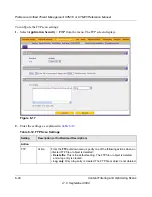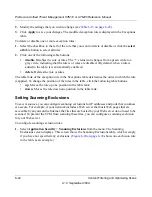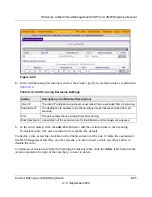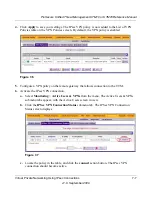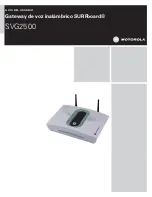
7-1
v1.0, September 2009
Chapter 7
Virtual Private Networking
Using IPsec Connections
This chapter describes how to use the IP security (IPsec) virtual private networking (VPN) features
of the UTM to provide secure, encrypted communications between your local network and a
remote network or computer. This chapter contains the following sections:
•
“Considerations for Dual WAN Port Systems (UTM25 Only)
” on this page.
•
“Using the IPsec VPN Wizard for Client and Gateway Configurations” on page 7-3
.
•
“Testing the Connections and Viewing Status Information” on page 7-16
.
•
“Managing IPsec VPN Policies” on page 7-21
.
•
“Configuring Extended Authentication (XAUTH)” on page 7-37
.
•
“Assigning IP Addresses to Remote Users (Mode Config)” on page 7-42
.
•
“Configuring Keepalives and Dead Peer Detection” on page 7-54
.
•
“Configuring NetBIOS Bridging with IPsec VPN” on page 7-58
.
Considerations for Dual WAN Port Systems (UTM25 Only)
On the UTM25 only, if both of the WAN ports are configured, you can enable either auto-rollover
mode for increased system reliability or load balancing mode for optimum bandwidth efficiency.
Your WAN mode selection impacts how the VPN features must be configured.
The use of fully qualified domain names (FQDNs) in VPN policies is mandatory when the WAN
ports function in auto-rollover mode or load balancing mode, and is also required for VPN tunnel
failover. When the WAN ports function in load balancing mode, you cannot configure VPN tunnel
failover. A FQDN is optional when the WAN ports function in load balancing mode if the IP
addresses are static but mandatory if the WAN IP addresses are dynamic.
See
“Virtual Private Networks (VPNs)” on page B-9
for more information about the IP addressing
requirements for VPNs in the dual WAN modes. For information about how to select and
configure a dynamic DNS service for resolving FQDNs, see
“Configuring Dynamic DNS” on
page 3-19
. For information about WAN mode configuration, see
“Configuring the WAN Mode
(Required for the UTM25’s Dual WAN Mode)” on page 3-9
.








